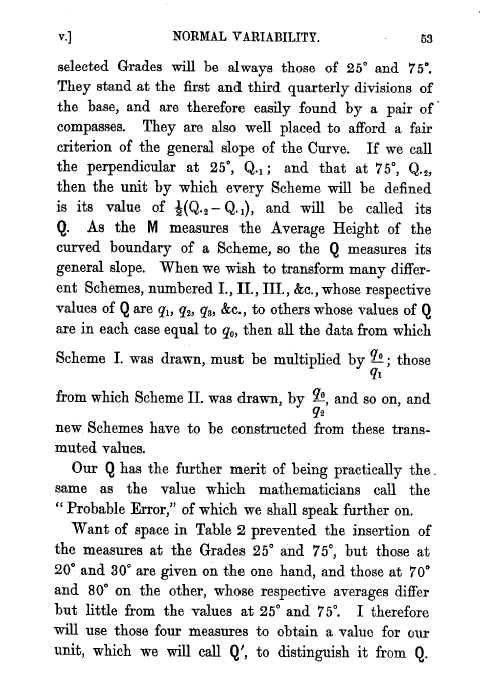V.] NORMAL VARIABILITY. 53
selected Grades will be always those of 25° and 75°. They stand at the first and third quarterly divisions of the base, and are therefore easily found by a pair of compasses. They are also well placed to afford a fair criterion of the general slope of the Curve. If we call
the perpendicular at 25°, Q.1i and that at 75°, Q.2,
then the unit by which every Scheme will be defined
is its value of 12_(Q-2_Q.,), and will be called its
Q. As the M measures the Average Height of the curved boundary of a Scheme, so the Q measures its general slope. When we wish to transform many different Schemes, numbered I., II., III., &c., whose respective
values of Q are q1, q2i q3, &c., to others whose values of Q are in each case equal to q0, then all the data from which Scheme I. was drawn, must be multiplied by g0 ; those
ql
from which Scheme II. was drawn, by 20, and so on, and
92
new Schemes have to be constructed from these transmuted values.
Our Q has the further merit of being practically the, same as the value which mathematicians call the " Probable Error," of which we shall speak further on.
Want of space in Table 2 prevented the insertion of the measures at the Grades 25° and 75°, but those at 20° and 30° are given on the one hand, and those at 70° and 80° on the other, whose respective averages differ but little from the values at 25° and 75°. I therefore will use those four measures to obtain a value for our unit, which we will call Q', to distinguish it from Q.

